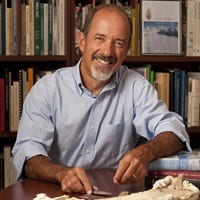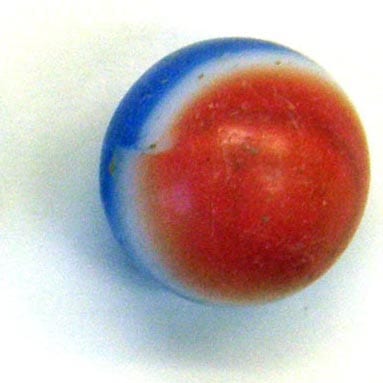
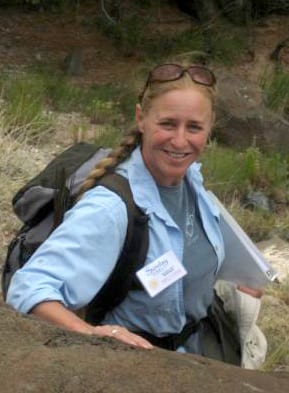 Old restored homes — gentrified with galleries, shops and restaurants — ring the historic and picturesque plaza of Ranchos de Taos in northern New Mexico.
Old restored homes — gentrified with galleries, shops and restaurants — ring the historic and picturesque plaza of Ranchos de Taos in northern New Mexico.
The plaza, once a hub of village life in Ranchos de Taos, these days is notably absent of children. Their families have been driven to the outskirts of the Catholic village by a booming tourism industry that has pushed up property values.
But the children left their mark, says archaeologist Sunday Eiselt, who for three years has led digging crews in some of the homes through her work at the Archaeology Field School of the SMU-in-Taos campus of Southern Methodist University. They’ve unearthed children’s artifacts up to 100 years old, including pieces of clay toys, tea sets, doll parts, clothing, mechanical trains, jacks, marbles, child-care implements, modern plastic Legos, Barbie doll parts, action figures and jewelry.
Eiselt’s interest in childhood artifacts is unique because children are rarely documented in archaeological narratives — particularly in the Spanish borderlands, where they appear as victims of slavery and boarding schools.
Her pilot excavations in 2007 and 2008 revealed patterns that suggest children were integral to the workforce and household economy in the 18th and 19th centuries. In the 1930s, the evidence shows, they were drawn from the workforce into the home and pulled as a consumer into the expanding commercial market as well as into the public education realm, says Eiselt, an SMU anthropology professor.
 Now Eiselt is launching the SMU-in-Taos Childhood Archaeology Project — thanks in large part to community relationships and trust formed over the past few years. A systematic and scientific examination of children’s lives will provide new perspectives on the dynamics of Spanish and American occupation of New Mexico, she says.
Now Eiselt is launching the SMU-in-Taos Childhood Archaeology Project — thanks in large part to community relationships and trust formed over the past few years. A systematic and scientific examination of children’s lives will provide new perspectives on the dynamics of Spanish and American occupation of New Mexico, she says.
“When state resources and institutions are aimed at children’s lives, cultures are irrevocably changed,” she says. “We’re asking, ‘What can the archaeology of children tell us about the transformation of Hispanic Rio Grande communities over time?'” We’re investigating the impact of state expansion on child-rearing and education in the Spanish borderlands by examining childhood on the Ranchos de Taos Plaza.”
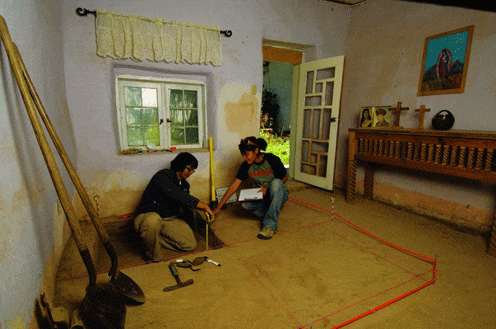 The Ranchos de Taos artifacts bear witness to changes the community has undergone over the past 200 years, she says. Settled by the Spanish in 1716, Ranchos de Taos ultimately absorbed many aspects of Anglo culture. The Catholic grade schools eventually closed, and Hispanic children were forced into the public school system.
The Ranchos de Taos artifacts bear witness to changes the community has undergone over the past 200 years, she says. Settled by the Spanish in 1716, Ranchos de Taos ultimately absorbed many aspects of Anglo culture. The Catholic grade schools eventually closed, and Hispanic children were forced into the public school system.
“What we’ve learned so far is that as you go back in time children are harder to see because you don’t have the inundation of commercial toys,” Eiselt says. “During the Depression Era the plaza is fairly active. We see a lot of communal games like jacks that kids play together. Later in the ’60s and ’70s we see more toys that are individually based and that promote individual play.”
Now Eiselt has the blessing of Ranchos de Taos adults who are interested in their history and anxious to preserve their heritage. The plan is to include children in grades K-12 in the project with fully integrated activities such as oral history interviews, photographs, history education and hands-on excavating. Besides archaeological survey and excavation, Eiselt is digging through files at the state historical archives in Santa Fe. There she’s gathering clues about everything from riddles and toys to customs and education.
The Childhood Archaeology Project also will include analysis of images made by Works Progress Administration photographer John Collier Jr., who chronicled the Great Depression. Many of his photos are on exhibit at the University of New Mexico’s Maxwell Museum of Anthropology.
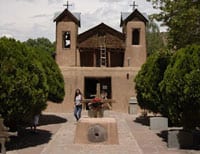 While excavation and research progresses, service projects in the local community also will continue as they have the past few years. University students at the field school work closely with property owners. Each summer 30 undergraduates engage in three weeks of hard labor to re-plaster the historic San Francisco de Asis, a church that’s not only venerated locally by its parishioners but also appreciated worldwide as a unique architectural monument.
While excavation and research progresses, service projects in the local community also will continue as they have the past few years. University students at the field school work closely with property owners. Each summer 30 undergraduates engage in three weeks of hard labor to re-plaster the historic San Francisco de Asis, a church that’s not only venerated locally by its parishioners but also appreciated worldwide as a unique architectural monument.
“It shows our commitment to the community. The people understand we’re not here to exploit the children. Your hands really become part of this church,” Eiselt says. “More and more archaeologists are having to work in communities — not just in remote places. So we’re working with the descendants of the people we’re studying. It’s much more dynamic. The secret to this kind of archaeology is you don’t try to control it. You have to step back and let it unfold.”
Some of the village’s historical traditions include the deeply religious folk society of men called Los Hermanos Penitentes. Pervasive in New Mexico in the 1800s, members of the society carried crosses and flagellated themselves to atone for their sins. Public until almost the turn of the 19th century, the society was forced underground when Catholic clergy increasingly frowned on their practices.
“The student archaeologists have earned the trust of this lay brotherhood sufficiently to be invited to excavate a morada. These are the chapels where many of their rituals take place and so this is a great honor for us,” says Eiselt. Work begins next year in tandem with the Childhood Project. — Margaret Allen
Related links:
Childhood Archaeology Project
Sunday Eiselt and her research
Sunday Eiselt brief bio
SMU’s Archaeology Field School
SMU-in-Taos
![]() Video: SMU-in-Taos
Video: SMU-in-Taos
Student Adventures Blog: Students blog about their experiences at SMU-in-Taos
SMU’s Department of Anthropology
Dedman College of Humanities and Sciences
 The remarkable 60-year-career of internationally recognized field archaeologist Fred Wendorf, SMU Henderson-Morrison Professor of Prehistory Emeritus, is the subject of an interview with
The remarkable 60-year-career of internationally recognized field archaeologist Fred Wendorf, SMU Henderson-Morrison Professor of Prehistory Emeritus, is the subject of an interview with  Dr. Fred Wendorf came of age and began his career during a formative period in American archaeology. But after leaving his permanent mark on the development of archaeology in the American Southwest and the United States, he essentially founded the study of the prehistoric eastern Sahara, beginning with the Aswan Dam Project in the Nile River Valley.
Dr. Fred Wendorf came of age and began his career during a formative period in American archaeology. But after leaving his permanent mark on the development of archaeology in the American Southwest and the United States, he essentially founded the study of the prehistoric eastern Sahara, beginning with the Aswan Dam Project in the Nile River Valley. Dr. Richard Pettigrew of ALI interviewed Dr. Wendorf for
Dr. Richard Pettigrew of ALI interviewed Dr. Wendorf for 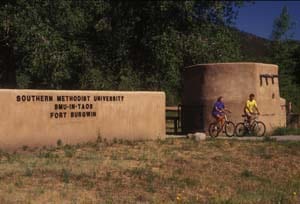 The goal of the Taos Collaborative Archaeology Program (TCAP) is to unite the strengths of SMU’s community-based archaeology and Mercyhurst’s excavation, documentation and analytical protocols to offer students an unparalleled archaeological training experience.
The goal of the Taos Collaborative Archaeology Program (TCAP) is to unite the strengths of SMU’s community-based archaeology and Mercyhurst’s excavation, documentation and analytical protocols to offer students an unparalleled archaeological training experience.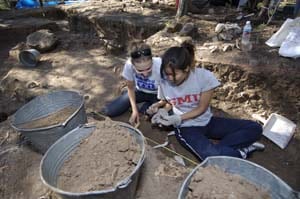 The first TCAP session was June 1 through July 15, and joined 12 students from SMU with 16 from Mercyhurst. SMU’s TCAP director is
The first TCAP session was June 1 through July 15, and joined 12 students from SMU with 16 from Mercyhurst. SMU’s TCAP director is  The Mercyhurst group is supplying a new remote sensing device known as a gladiometer that works in tandem with computer software to detect features and structures buried at shallow depths, to generate subsurface maps and to better target excavation efforts.
The Mercyhurst group is supplying a new remote sensing device known as a gladiometer that works in tandem with computer software to detect features and structures buried at shallow depths, to generate subsurface maps and to better target excavation efforts. SMU-in-Taos has offered summer education programs tailored to the region’s unique resources since 1973, but the rustic campus dormitories were impractical for use during colder weather. New construction, recent renovations to housing and technological improvements provided through a $4 million lead gift from former Texas Gov. William P. Clements and his wife, Rita, will allow SMU students to take a full semester of classes for the first time this fall.
SMU-in-Taos has offered summer education programs tailored to the region’s unique resources since 1973, but the rustic campus dormitories were impractical for use during colder weather. New construction, recent renovations to housing and technological improvements provided through a $4 million lead gift from former Texas Gov. William P. Clements and his wife, Rita, will allow SMU students to take a full semester of classes for the first time this fall. Preliminary anthropology research in French Polynesia seems to confirm what psychology and sociology researchers have observed about domestic violence in general: There are two different types. One kind endures and escalates, while the other gradually fades away after a few years.
Preliminary anthropology research in French Polynesia seems to confirm what psychology and sociology researchers have observed about domestic violence in general: There are two different types. One kind endures and escalates, while the other gradually fades away after a few years.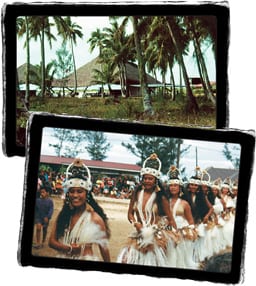 Lockwood leaves in June for a month-long stay on Tubuai and Rurutu. She first traveled there in 1981 as a graduate student for her doctoral degree at UCLA. In the past three decades Lockwood has made seven trips to the islands, in particular Tubuai. The most recent one was in 2005, when she conducted preliminary research, interviewing husbands and wives from 25 families about domestic violence in their lives.
Lockwood leaves in June for a month-long stay on Tubuai and Rurutu. She first traveled there in 1981 as a graduate student for her doctoral degree at UCLA. In the past three decades Lockwood has made seven trips to the islands, in particular Tubuai. The most recent one was in 2005, when she conducted preliminary research, interviewing husbands and wives from 25 families about domestic violence in their lives.